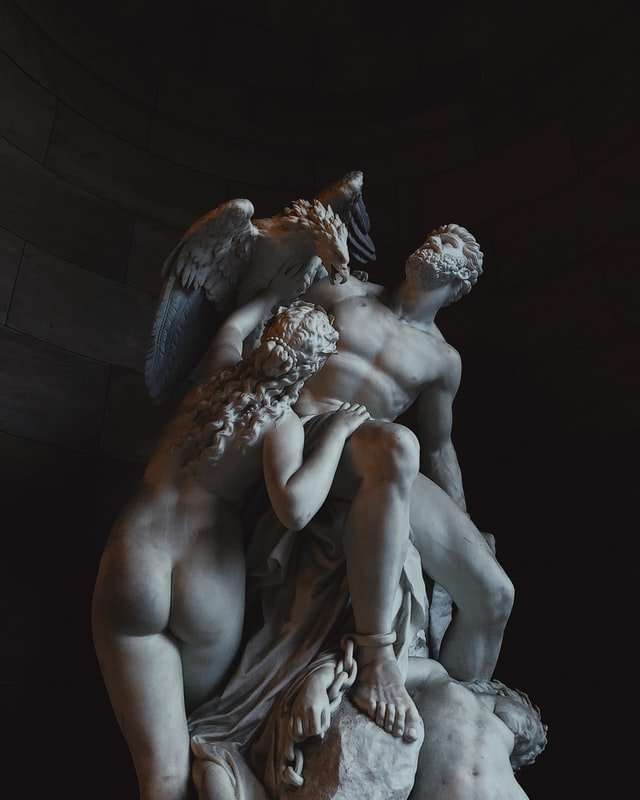If you have seen modern art, you have probably wondered to yourself how can this be art? How can people pay so much money for a piece of paper with some paint on it? Is it just because it is unique and no one else has one like it? If not, what makes a work of art art and what makes people want to own an original piece of art?
In the last century or so, paintings have changed drastically. Instead of realistic portrayals of people, places, and things in the world, they are now abstract or expressionist. Instead of beautiful colors that capture your attention and draw you into the frame, they are now made up of ugly colors that repel your eyes away from them. Instead of interesting patterns that make you want to look at them closer and see what is going on in the painting, they are now just a random mess. Why is this so?
Instead of trying to find out what makes a painting good or bad and why people would buy them for sums as high as $200 million dollars, we will try to answer “What Makes Mistakes Art?” We will try to show that these pieces of modern art were created by two artists who combined technology and art to create a unique experience.
We began to realize that we wanted to create art with a direct experience, something that would make people think, “What is this? I’ve never seen anything like this before.”
We realized that the best way to do this was to use technology. We believe that technology should be used in all kinds of art, not just for creating new digital art or for interactive installations, but for all types of art. This is important because there is an endless amount of creative possibilities in using technology in art.
Trying to understand how to use new technologies has been a great experience for us as artists and we hope it will also be for our audience.
“I’ve been a painter my whole life,” says Robert. “My paintings belong to what you might call the traditional stream of painting.”
“I’ve always been interested in technology,” says Sean. “My paintings are more or less conceptual.”
The two artists met at a concert, discussing their work and common interests. Robert’s work is figurative and Sean’s is abstract. They each brought unique qualities to the collaboration—Robert’s ability to capture reality and Sean’s technical expertise.
Titled “Digital Reflections in Oil,” the paintings were created using a combination of digital photography and oil paint, processed on a computer using special software that deepens and transforms colors. The images were then transferred onto canvas and painted over by hand, creating an amalgamation of traditional painting techniques with digital technology that produces stunning and unexpected results.
“It was very exciting to work with someone from such a different background than myself,” says Robert. He adds: “What we came up with was far better than anything either of us could have done alone.”
The art in the 21st century is very different from what we can see during the 20th century. Most of the artists are now trying to express something new and advanced, not just something functional but also creative. A good piece of modern art is a piece that doesn’t only have a high value for money but also a high value for meaning and artistic value.
Trying to make something modern is not easy, but some artists prove that it’s possible to create a really amazing and unique masterpieces. Even though their pieces are not made by simple materials, they are still considered as works of art. The most famous example would be the A1 Bunting, who used Microsoft Excel as his primary material in making artworks that were inspired by Google Earth satellite images.
It takes a lot of courage to take up this kind of path because most people don’t understand modern art and they consider it as useless or pointless. But if you think about it, there’s no reason why you should not try to do something unique or different from other artists in the world especially if you’re an artist yourself.
When I was a child, my father used to take me to museums. The first time he took me to the Modern Art Museum in Los Angeles, I was struck by a painting in which there was not a single straight line. It wasn’t until much later that I realized how revolutionary this was.
As a teenager, I began to explore various forms of art. I became fascinated with modern art because it was so different from what I had seen before. It wasn’t until years later, however, that I truly appreciated the beauty of modern art paintings.
A lot of people think that modern art is just bad art or pretentious art. But it’s not always easy to explain why some abstract paintings are considered good while others are considered bad. Modern art is abstract and makes use of many different techniques to create myriad effects. The problem is that not all artists can make good use of these techniques and end up producing bad pieces of art that baffle people who aren’t familiar with these techniques.
I studied painting in college and discovered that some painters were using technology in their work in new ways. This led me to question whether or not technology has an inherent place in modern art paintings and if so, what that place might be?
Modern art is the creation of a new and unique experience. True, this idea has been used to justify all sorts of things but it’s still true. A modern painting isn’t supposed to be beautiful, or even interesting. It’s supposed to make you feel something new.
When I was an art student I had a curious insight about modern art. It seemed to me that most modern art pieces were not created by trying to express an idea or feeling but rather by taking some object and removing everything from it that made it ordinary. When you remove what is there and replace it with a flat color (usually white) then you are left with a blank slate on which you can project your own thoughts and feelings.
And that’s what people do. When they see a Picasso they don’t see anything in particular; they look at it until they find something in there that resonates with them and then tell themselves that’s what Picasso meant to express. The same is true for abstract paintings – the fact that everyone sees something different in them just proves how little one can trust the individual interpretation of art.*
The “Genesis” series are the first paintings to be created with a new software technology developed by artist and programmer Alex Wade. The paintings are based on a 3D scan of a male figure and were painted using an entirely new technique called Generative Art.
Turing, named after Alan Turing, is a system which can create works of art entirely from scratch and in a fraction of the time it would take for a human artist to do so. For example, “Genesis I” took only three minutes to complete although it looks like it might have taken weeks.
Turing examines the artist’s work and recreates it using his own style, colour palette and subject matter. The resulting image is not simply a copy but an entirely new piece of art that, while similar to the original, can never be exactly replicated by any other algorithm or artist.


